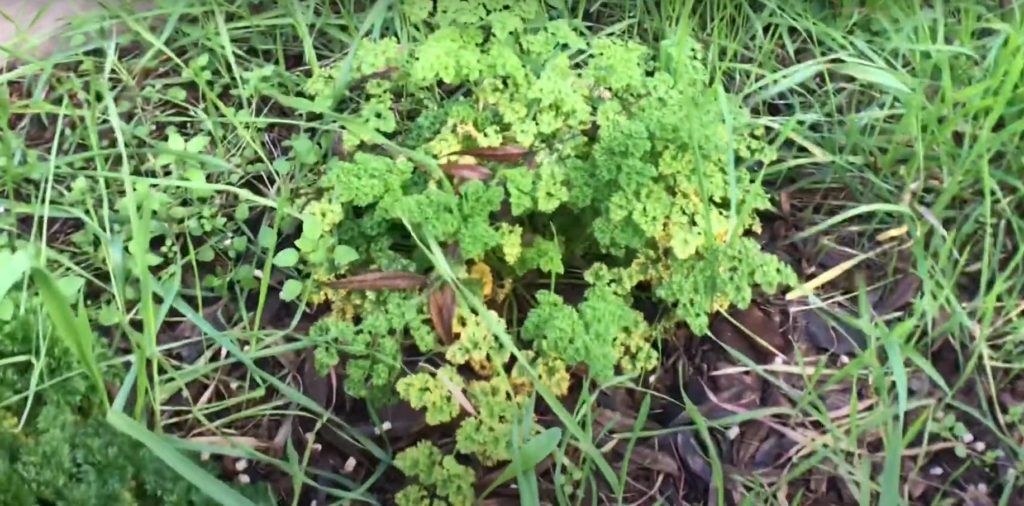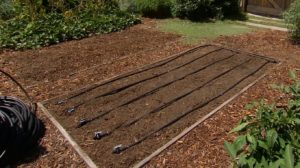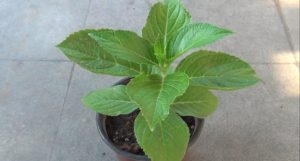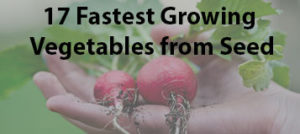Parsley is a herb that is both delicious and healthy that can upgrade your meal so much!
So, you decided to grow Parsley in your garden or balcony but one day you suddenly notice that the Parsley leaves are turning yellow! Well, don’t worry! You can still fix it! We’ll explain to you why this happened and how you can fix it!
Usually, Parsley leaves turning yellow indicate that the plant is under some sort of stress, but there also other different reasons for this like hot weather, too much or too little watering, stress on the root system, wrong amount of fertilizing, dense soil or potting mix, lack not enough light, pests, blight or some sort of a disease.

Below, we’ll fully explain each problem, what is causing it and how you can fix it.
Hot Summer Weather
The yellow leaves indicate that the plant is dry.
During hot summer days, your Parsley plant is losing water and moisture from its body very quickly before the roots can absorb the water in soil and that causes the leaves to turn yellow, dry and eventually fall.
How You Can Fix This?
Grow the plant in an area where it has shade or use a cloth or any other object that can cast a shadow over the plant and protect it from the sun and the wind. Also, make sure to water the plant well in the early morning or late evening.
The Right Amount Of Water
Yellow leaves can also be caused by giving it a wrong amount of water, you need to make sure that the plant is getting the right amount of water.
Too much water will cause the plant’s roots to suffocate and eventually rot or will cause “crown rot” while not enough water will cause the plant to dry.
How You Can Fix This?
First, check if the soil is wet enough by sticking your finger or a meter about 1 inch (or 2.5 cm) into the ground.
If you are not sure if you need to give more water I strongly recommend you get one of these 3-in-1 gardening meters.
If the soil isn’t wet enough, water deeply to the root system once during the early morning or late evening.
But make sure that the soil isn’t soggy because it might cause root rot or crown rot.
Transplant Reaction
Yellow leaves could also indicate that the roots are under some sort of stress because Parsley plants have long roots that are rather delicate, and disturbing it could cause the plant to die.
How You Can Fix This?
If you need to transplant it, do so very carefully and avoid disturbing the root system as much as possible.
Make sure that the planting location is ready in advance in order to plant it quickly and water it deeply.
Pro tip – If you are going to buy a new persley plant in your local nursery, you must check that there aren’t yellow leaves and that the roots aren’t coming out from the draining holes because in that situation, the plant will have a problem adjusting to a new soil.
The Right Amount Of Fertilizing
Yellow leaves could also indicate that there’s too much or too little nutrients in soil.
Parsley has long roots which enable it to find enough nutrients in the soil.
How You Can Fix This?
The best way is to fertilize the garden bed or pot before planting.
Use a mixture of different fertilizer and later make a fertilizer test to find the required amount of fertilizer or according to the instructions on the packaging.
When I plant and grow my persley I always use this fertilizer and always get great results.
If the leaves are turning yellow after you fertilize, water the plant to balance the soil.
Too Dense Soil Or Potting Mix
The yellow leaves could also indicate that the soil or potting mix is too dense and this makes it harder for the plant to absorb all the nutrients it needs in order to grow.
How You Can Fix This?
If you’re using clay soil, you can add sand, dried shivered leaves or compost like this to your garden.
If the soil that you use contains soil from the garden or bagged garden soil, mix some sand. Before planting the Parsley, you can buy this soil.
Lack Of Sunlight
Yellow leaves could indicate that the plant is not getting enough light. Usually it happens when you are growing your parsley in the winter, indoors or you are living in an area with little sunlight.
How You Can Fix This?
If you are living in an area with plenty of sunlight, try to remove the plant to another location so it could get the right amount of sunlight every day.
If it’s the winter or you are living somewhere with almost no sunlight, you’ll need to move the plant indoors and replace the sunlight with growing lights.
They are cheap, effective and you can use it for multiple plants.
Small Container
Yellow leaves could indicate that the roots don’t have enough room to grow because the container is too small and shallow, and Parsley loves to spread its long roots deep into the soil to grow.
How You Can Fix This?
There’s no way around it, you need to get another pot and it should be at least 10 inch (25 cm) deep.
There’s a great deal of a set of 12 pots in a bargain price that I usually order, and if you need new pots go grab the deal before it ends.
The Leaf Spot Fungus
Yellow leaves could indicate that the plant is suffering from the fungal infection called “The leaf spot fungus”.
There are microbes in the air called “fungal spores” that are drawn to wet and warm plant surfaces.
The longer they stay on it and reproduce, it will cause the leaves to turn yellow and later brown with black spots until the whole plant is affected.
It is also contagious to other companion plants in the area, so watch out from this.
How You Can Fix This?
Make sure that there’s no moisture on the plant by watering the soil in the early morning or late evening and cut the foliage carefully.
If the plant is affected and you’re growing it indoors, keep it away from the other plants to avoid spreading the infection and carefully cut the infected leaves.
If you’re growing it outdoors, you can try bicarbonate from baking soda using 1/2 teaspoon with 2.5 ml of water or you can get fungicide and use it according to the instructions of the packing.
If it’s not working and the whole plant is infected, dig it from the ground quickly and throw it away and then start growing a new one.
Pests
Yellow leaves indicate that pests like spider mites of ants are feeding on the plant.
How You Can Fix This?
You can either buy an insecticide like this one or apply an organic neem oil or insecticidal soap on the underside of the leaves. (Sprinkle a little sugar to attract the ants).
Blight
Yellow leaves indicate that the plant is suffering from blight caused by a fungus called “Botrytis” that attacks the tender parts of the plant because of a high level of humidity and will cause the plant to wilt.
How You Can Fix This?
Make sure that the plant has enough air and sunlight.
Fertilize it and water the soil to avoid moisture on the plant’s body, those are good growing conditions that will avoid this problem.
If the plant is infected, pick up any debris that falls from the plant as soon as possible to avoid spreading the disease and burn them or bury them under 30 cm of soil far from plants.
The “Septoria” and “Stemphylium” diseases
Yellow leaves can indicate that the plant is suffering from a disease caused by an infected seed, such as the “Septoria” disease.
That can cause the leaves to become angular and darker and eventually dotted by black pycnidia and also the “Stemphylium” which causes the plant to dry and eventually die.
How You Can Fix This?
In order to avoid this, you can buy a disease resistant seed or a seed that was tested to reduce diseases.
Grow the plant in non-host crops and give the plants enough space from each other. Give the plants all the water and sunlight it needs and allow them to dry from rainfall, watering and dew and water the soil deeply rather than watering the plant overhead.
If the plant is indeed infected, use fungicide according to the instructions on the packing as soon as you see the earliest symptoms before the disease can spread any further.




